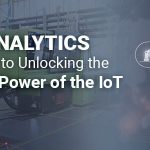The IoT Curator:: October 2017
Highlights
- New business domains: The role of Industrial Internet of Things
- Industry 4.0: The power of connected machines
- Choosing a profitable model: IIoT
- IIoT implementation: Four key elements
Thank you so much for your support and enthusiasm for our previous newsletters. This month we present more insights ongoing in the world of ‘IIoT.’ Here is hoping that you get key takeaways from this month’s newsletter.
New business domains: The role of Industrial Internet of Things
Our team came across this fantastic piece of information in the Harvard Business Review that highlights the role of transforming manufacturing products as services via the digitalization avenue. Read on to know more. The manufacturing sector has gradually started to venture and explore the domain of digitalizing their products. This heavily invested sector was expected to jump on the digitalization bandwagon because third party enterprises, mostly Information Technology giants, are making business users monitor manufacturing products through software applications. This endangers the manufacturing Supply Chain rendering manufacturing companies to be mere product sellers. Through the Industrial Internet of Things methodologies, manufacturing companies can now empower business users themselves to monitor the products. This domain of Knowledge as a Service (KaaS) empowers manufacturing companies to regain their ownership of their product also ensuring an extended effort to enhance customer experience and brand value. Similarly, Asset as a Service too is emerging to be a commodity of huge value for the manufacturing sector. This article serves as great advice to manufacturing units with a stellar product range about what is happening in the industry and what should be done to safeguard product ownership. To know more click on this link that elaborates the rise of New Business domains.
Industry 4.0 : The power of connected machines
Although this information mainly tries to speak about challenges in undertaking the Industry 4.0 mandate, we found a bright side on a successful implementation in an otherwise tense sounding concept. This article also validates for you the information for the possibility of Business Domains through ‘IIoT.’ The main takeaway of Industry 4.0 as a concept is maximum connected products in an enterprise. Although, Industry 4.0 has several challenges and benefits the basic aspect of the main focus of the fourth industrial revolution will always be a wholesome integration of company assets so that they function homogeneously. This ensures an expanded output and increased efficiency in machines with heavy CAPEX. The biggest difference though will be the fact that various aspects of an enterprise premise will no longer work in silos but operate as one single unit. The result will provide business insights on exploring related business domains hence allowing them a novelty and a need to upscale or entirely change the current business model. Although, Industry 4.0 seems like a complicated landmark to be achieved it comes with several other exciting areas that are exponentially profit churning. For further insights read this piece of information that further talks about Industry 4.0.
Choosing a profitable model: IIoT
Well written information that speaks about the proportionate of the nature of the ‘IIoT’ implementation and the choice of relevant business model. More information below. A lot of captured data gets lost due to collection defects and the lag that occurs when data taken from the point of a source is transmitted to the ‘Cloud’ for insightful analysis. ‘IoT’ as a term has become broader than ever and is continuously diversifying itself in multiple areas. Industrial ‘IoT’ has transformed a simple machine into a data giver. The current ‘IIoT’ trend diverts the need of transmitting data to the cloud by placing computer near the source of the data. This revolutionary breakthrough has got the industry all excited thinking of the business possibilities that succeed this invention. Industries with heavy machinery especially benefit from this innovation because the predictability monitoring allows an enterprise to avoid a major expense and downtime in case of sudden machine failure. This feature along with others can be disintegrated and sold as newer models from the core enterprise that benefit their client base and generate more revenue. To explore profitable models, browse this article to gain knowledge about the same.
IIoT implementation: Four key elements
The question that even our team had, “How do you actually put the IIoT in place?” Well, the weblink gives a precise snapshot of an overview of ‘IIoT’ implementations. Short and interesting! Do give it a read. The fourth industrial revolution and ‘IIoT’ are two words that can be used interchangeably. Indeed, in order to make a smart factory, ‘IIoT’ implementation is now a must. Components that drive a successful ‘IIoT’ implementation begin with what operation capacity an enterprise already has. Once this is determined, Assets, Infrastructure, Analytics and People need to be aligned and calibrated as per the business goals. The end goal of ‘IIoT’ is to make a very efficient enterprise, something with varied scopes and a variety of business models. Implementations never really follow a standardized format but depend on operational requirements and the desired result from ‘IIoT’ implementation. Implementations further explained on this link.



